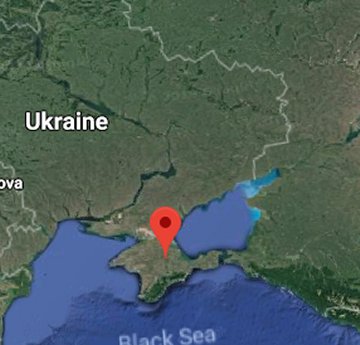
Sarmatians, Sarmatae or Sauromatae (the second form is mostly used by the earlier Greek writers, the other by the later Greeks and the Romans) were a people whom Herodotus (4.21-117) in the 5th century BC put on the eastern boundary of Scythia beyond the Tanais (Don). They were a proto-Iranian people akin to the Scythians (Saka.)
Many historians believe that they were not pure Scythians, but, being descended from young Scythian men and Amazons, spoke an impure dialect and allowed their women to take part in war and to enjoy much freedom. Later writers call some of them the “woman-ruled Sarmatae.” Hippocrates (De Aere, etc., 24) classes them as Scythian. From this we may infer that they spoke a language cognate with Scythian.
Tacitus disparaged the Sarmatians (Germania, ch. 46) whom he placed in woodlands not steppes, and thought had a “degraded aspect” and pictured as “living on horseback and in wagons” which does sound likely.
Later, Pausanias, viewing votive offerings near the Athenian Acropolis in the 2nd century AD (Description of Greece 1.21.5-6), found among them
…a Sauromatic breastplate. On seeing this a man will say that no less than Greeks are foreigners skilled in the arts: for the Sauromatae have no iron, neither mined by themselves nor yet imported. They have, in fact, no dealings at all with the foreigners around them. To meet this deficiency they have contrived inventions. In place of iron they use bone for their spear-blades, and cornel-wood for their bows and arrows, with bone points for the arrows. They throw a lasso round any enemy they meet, and then turning round their horses upset the enemy caught in the lasso.
Their breastplates they make in the following fashion. Each man keeps many mares, since the land is not divided into private allotments, nor does it bear any thing except wild trees, as the people are nomads. These mares they not only use for war, but also sacrifice them to the local gods and eat them for food. Their hoofs they collect, clean, split, and make from them as it were python scales. Whoever has never seen a python must at least have seen a pine-cone still green. He will not be mistaken if he liken the product from the hoof to the segments that are seen on the pine-cone. These pieces they bore and stitch together with the sinews of horses and oxen, and then use them as breastplates that are as handsome and strong as those of the Greeks. For they can withstand blows of missiles and those struck in close combat.
The greater part of the barbarian names occurring in the inscriptions of Olbia, Tanais and Panticapaeum are supposed to be Sarmatian, and as they have been well explained from the Iranian language now spoken by the Ossetians of the Caucasus, these are supposed to be the modern representatives of the Sarmatae and can be shown to have a direct connection with the Alans, one of their tribes.
By the 3rd century BC the Sarmatae appear to have supplanted the Scyths proper in the plains of south Russia, where they remained dominant until the Gothic and Hunnish invasions. Their chief divisions were the Rhoxolani, the Iazyges, with whom the Romans had to deal on the Danube and Theiss; and the Alani.
The term Sarmatia is applied by later writers to as much as was known of what is now Russia, including all that which the older authorities call Scythia, the latter name being transferred to regions farther east. Ptolemy’s Geography gave maps of European and Asiatic Sarmatia.
